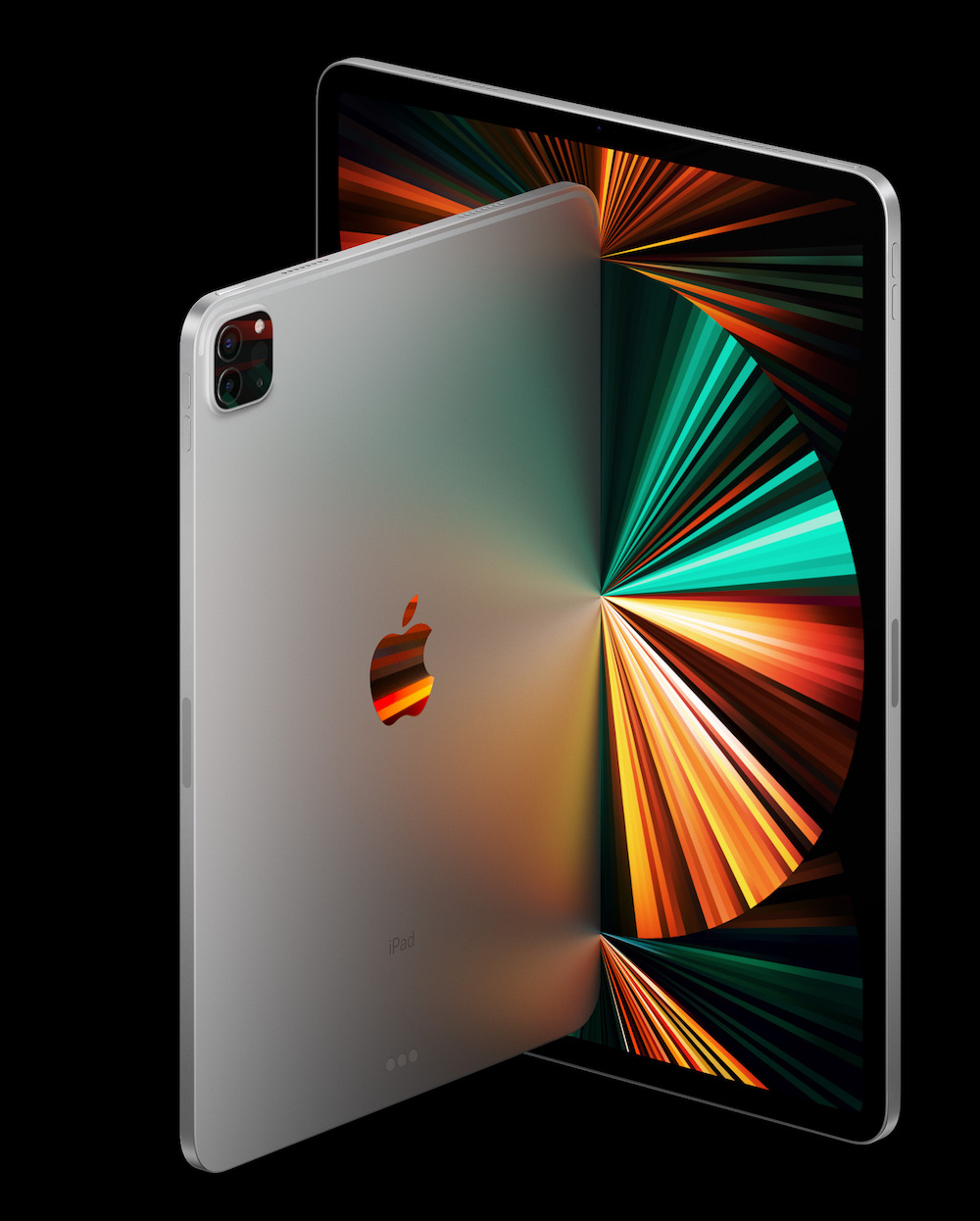

Apple has crammed some amazing technology into the svelte frame of the 11” M1 iPad Pro. At almost exactly 1 lb in weight, it is also almost exactly as powerful as the newest 24” iMac. It uses exactly the same processor, seemingly at a very similar clock speed ( Apple stays silent on clock speeds, but all of the M1 devices so far benchmark very similarly). M1 computers, including the iPad, are also right around the performance of a 16” MacBook Pro, a high-end 21” Intel iMac or a low-end 27” Intel iMac. Let that sink in for a moment – this is a 1 lb device that performs like a midrange personal computer.
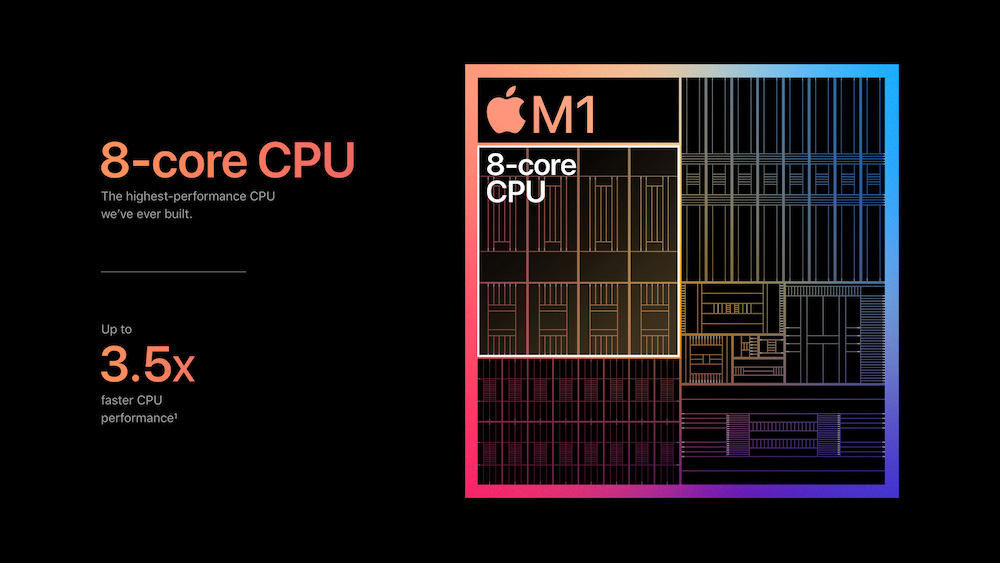

The M1 is also ridiculously power-efficient. It is running at a similar speed for many tasks to a 45 watt Intel processor, while it cannot be using much more than 5-10 watts. Again, Apple doesn’t release actual figures, but a fanless, 1 lb tablet simply cannot be using much more power than that. They’d never cool it if it did. Tablets and small, fanless laptops that use Intel processors (which do have listed power dissipation figures) invariably use 5 and 7 watt versions – even 15 watt processors always require a fan. Processor power consumption is listed in terms of Thermal Design Power (TDP) – effectively the amount of power that the chassis has to be capable of dealing with the heat from over a prolonged period of time. A listed TDP in the 5-10 watt range does not mean that it will never consume more than that for brief periods – some processors are capable of pulling as much as twice their rating or more, and Apple processors in particular are known to be efficient at reallocating power where it’s needed. If the CPU needs more power on a non-GPU intensive task (or the other way around), Apple’s highly integrated design lets them do that on the fly. In addition to their general penchant for secrecy, Apple’s highly integrated chip design may be another reason why they generally don’t report TDP figures.
A 1 lb, fanless tablet with most of the computing capability of a top of the line laptop or a midrange desktop computer is a significant technical achievement, and nothing running Windows or Android comes close. Every very light Windows laptop (under 2 lbs and fanless) makes enormous compromises to get there – among the most important is that they are all running either Atom or Celeron processors or, at the best, extremely power-optimized m-series Core processors. These are are all slow dual-core chips that have a hard time outperforming a recent iPhone – many of them don’t. A few 2 pound gaming machines use the lowest power versions of Core i series processors – slower than the iPad and twice the weight. Android tablets are, almost without exception, low-end devices designed to sell for a few hundred dollars or less, not performance-oriented machines that try to push the envelope of what’s possible in a lightweight device. Most Android tablets don’t even use high-end smartphone processors, much less anything with computer-grade performance.
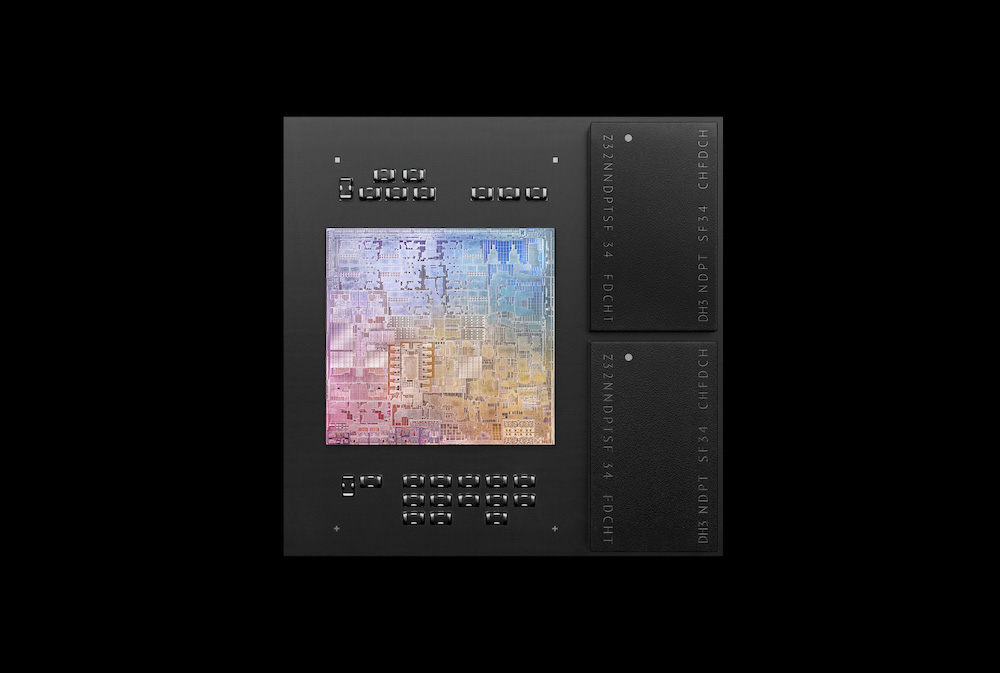

The M1 is a quad-core design that can be thought of as (almost) two of the most recent iPhone chips running together. It is much faster than anything else found in an ultralight computing device, whether it is a tablet or a tiny laptop. Apple actually claims eight cores, but they are counting four high performance cores and four high efficiency cores together – a standard way of counting cores on a phone, but computers tend to have identical cores. By a standard computer count, the M1 is a quad-core (the four performance cores) with a number of coprocessors – not only the efficiency cores and the GPU, but also the “Neural Engine” optimized for machine learning tasks.
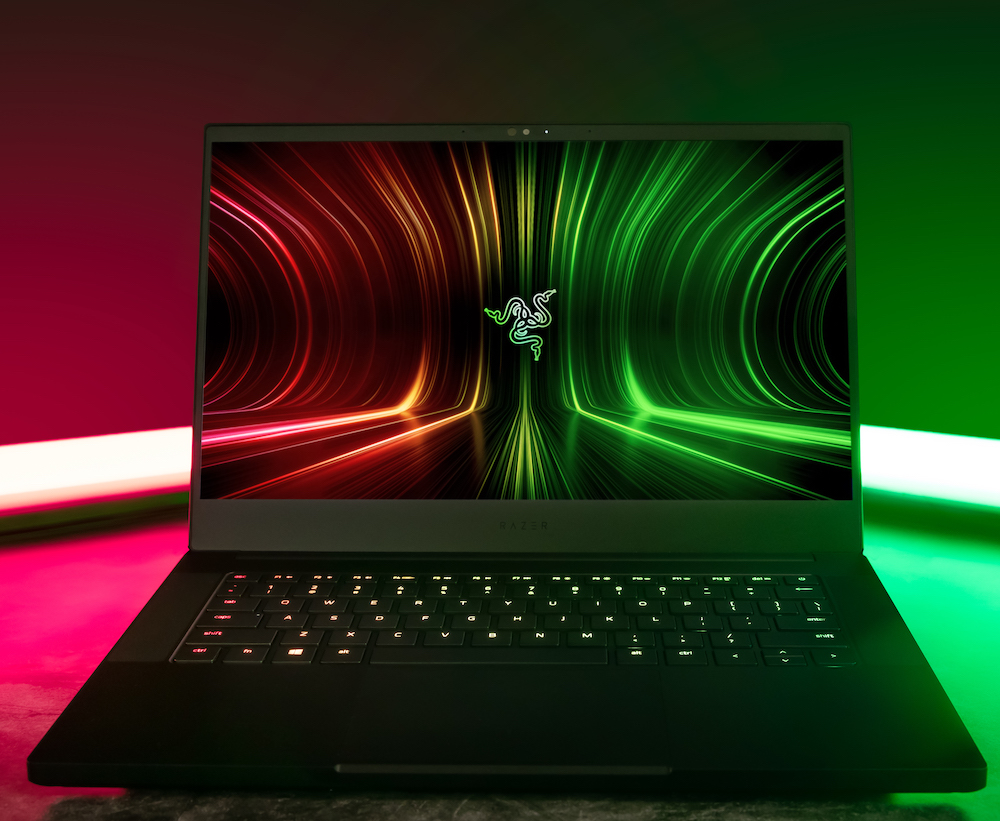

To get comparable performance to the M1 iPad Pro in a non-Apple device, you are probably looking at a Windows laptop somewhere in the 3 lb range. Either a relatively high-performance quad-core CPU with a lower end discrete GPU or a six or eight core CPU with a decent integrated GPU (some of the Ryzens) will generally be in the same performance range, depending on the task. Gaming and content creation laptops with higher-end discrete GPUs may be substantially faster on tasks where the GPU is heavily used. Apple’s highly integrated GPU is pretty good, but it’s not a GeForce 3070 (which shows up in at least one Razer laptop around 3 lbs). Of course, that machine is more than three times as heavy as the iPad, has plenty of fans to cool it, and the battery life with that GPU screaming is nothing to write home about. Even my 16” MacBook Pro with a larger battery and lesser GPU can go through its battery in an hour with the CPU and GPU running full speed – I haven’t used the Razer, but I’d be very surprised if it’s even that good at full power, just based on the laws of physics. The fact that Apple has built a one pound computer that even gets into the same performance range as high-end three pound 13 and 14 inch laptops is a MAJOR achievement, and it shows just how special the M1 really is.
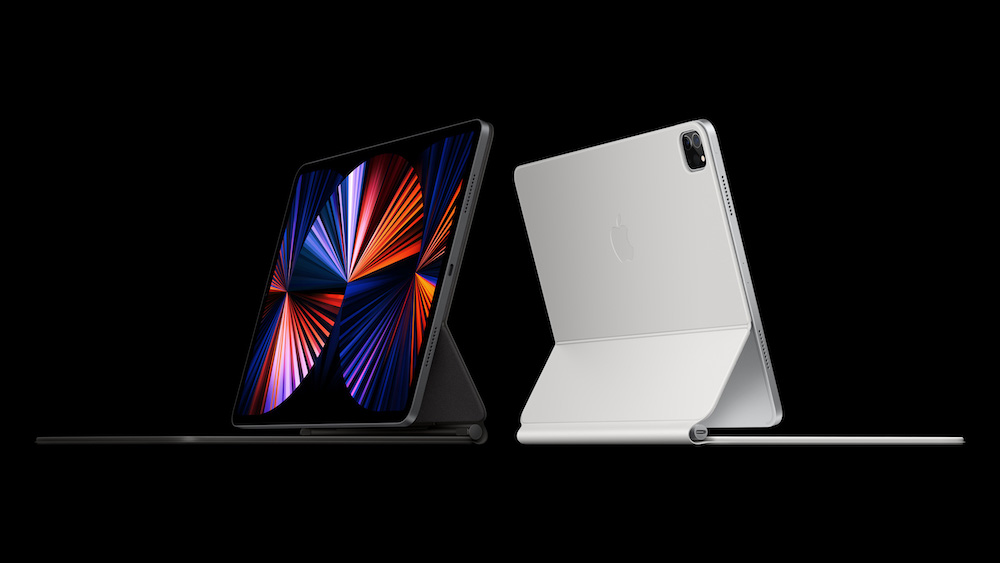

The rest of the hardware in the M1 iPad Pro is equally impressive, and again, nothing you would expect to find in a machine of this size and weight. All 11 inch iPad Pros ship with a beautiful display that Apple calls Liquid Retina, while the 12.9” model (which I did not test) adds Mini LED technology. Even the 11” screen is a wonderful device for viewing images in the field. I have used it for slideshows, including to professional artists, and it is easily in the same quality range as the screen on my 16” MacBook Pro. Most Android tablets and many Windows laptops use cheap screens, generally below Full HD (1080p) resolution and rarely displaying even the full sRGB color space. A few tablets and many higher-end laptops use high-resolution screens from Quad HD up to 4K, and with better gamut – often just full sRGB, but sometimes DCI-P3 or rarely Adobe RGB.
Apple often uses nonstandard aspect ratios (in this case, between 4:3 and 3:2) so the 2388×1668 resolution won’t look familiar, but it’s close to a squarer version of Quad HD (2560×1440), and very high for an 11” device.The squarer screen is actually almost ideal for viewing still photos – putting it in full-screen mode in Lightroom provides a very good view of a 3:2 (most cameras) or 4:3 (medium format, Micro 4/3, some compact cameras) image.
Apple claims support of the full DCI-P3 gamut and, while I don’t have the tools to measure, this is a very good wide-gamut screen (much greater than sRGB) that looks as good as my 16” MacBook Pro or any other portable device I have encountered. It’s not as good as my Eizo CS-2740 reference monitor, but I know of nothing portable that is, and the only candidate that I am aware of but haven’t used is HP’s DreamColor laptops. Lenovo used to use a few displays with calibrators on workstation laptops, but I haven’t seen those in a while. Those few displays that might be of similar or better quality are on much heavier devices – four and five pound (or more) workstation laptops, not tablets. Apple devices from the iPhone to the XDR Display tend to have very good displays, and the M1 iPad Pro fits neatly in that tradition.
The review unit I have has 1 TB of extremely fast solid state storage and 16 GB of RAM. Again, these are specs more befitting a top-end thin and light laptop than a tablet. It is possible to get this iPad with as little as 128 GB of storage, or as much as 2 TB (for a high price). The amount of RAM you get is determined by the storage you select – models with less than 1 TB of storage have 8 GB, while the 1 TB and 2 TB units have 16 GB – enormous for an iOS device.
The USB-C/Thunderbolt 3 port is fast enough that the iPad loads images from my GFX 100S faster than my 16” MacBook Pro does. I am using Apple’s USB-C reader on the iPad and a Sony USB 3.0 SD/XQD reader on the Mac. It’s possible that the SD reader on the Sony is slow, but it seems more likely that the Apple combination is quite fast. As is always true of iPads, it has only the single port. Fortunately, downloading a 128 GB card takes only a couple of percent of the battery, so there is rarely a need to charge and download simultaneously. This is much better than dedicated downloaders (none of which offer as easy a cloud backup solution, either). There are various multi-port adapters and hubs compatible with the iPad, including a few from Apple, that will give you other port types.
Battery life varies widely, depending on what you’re doing. Apple’s estimates of all-day plus life are reasonable if you’re doing what they think people do with iPads – consuming content by reading, surfing the web or watching movies. If you are using it as a portfolio (in Lightroom CC – Photos may be more efficient) or downloading and organizing images, battery life goes down to a bunch of hours, but not all day (4-5 hours?). If you’re actively editing large images, you could get as little as a couple of hours. Of course, actively editing 102 MP images on a tablet is supposed to be impossible?
So what’s the catch? Has Apple built the ultimate photographic field tool, capable of slipping into any backpack or largish shoulder bag, allowing the downloading, viewing and editing of any image in the field? For viewing and downloading, they almost have. I have run into absolutely no problems getting images onto the iPad, viewing them on the gorgeous screen, nor sending them to Adobe’s cloud storage (Verizon, you didn’t read that last part – 600 GB of images in a month and a bit, largely over cellular – I guess unlimited data really is unlimited)…
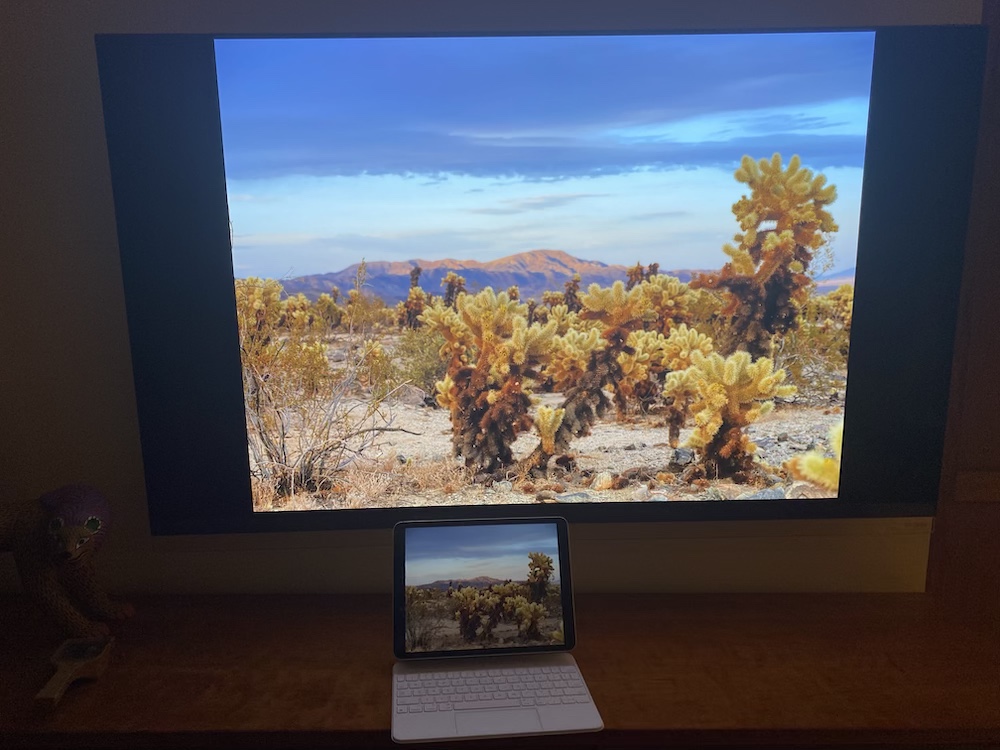

The iPad Pro is also a stunning portfolio tool. Handing it to someone (after applying some Apple Polish to the screen) and inviting them to flip through images is the best presentation I have seen on a portable device, and better than any computer-based portfolio solution I am aware of. It also works seamlessly with Apple’s AirPlay functionality to an Apple TV device, and probably to smart TVs as well (tested on an Apple TV 4K). Sending images from the iPad to a large LG OLED TV was the best digital display (as opposed to editing – any good monitor will be more accurate, but the big OLED TV is bright and dramatic) experience I have ever used.
Apple deserves kudos for having built what may be, as of summer 2021, the ultimate digital portfolio tool in the combination of iPad and Apple TV. If you have a modern iPad around, it is well worth equipping the TVs in your home or studio with Apple TV boxes, even strictly as portfolio display devices if you’ll never use them to watch Apple’s own streaming lineup, or Netflix, or Amazon Prime TV, or anything else. For the serious photographer who owns an iPad and uses it in their workflow and has a decent TV, the additional less than $200 for the Apple TV is well worth it. IPad to Apple TV to a projector is also a very good solution for slideshows to a larger audience.
There is a very large catch, though. If it stopped there, the M1 iPad Pro would receive a Highly Recommended and the review would end here. As a viewer/downloader/transmitter/portfolio device, it does. It is a work of genius for those applications, executed with typical Apple elan. If you are looking for a field machine/portfolio device, dedicated to a desktop or laptop editing workflow (I’ve not seen anything more portable than a largish laptop that is a true photo editing device) AND willing to spend a significant amount of money on a hyper-portable adjunct to your computer, it can’t be beat – Highly Recommended (easily) for those applications.
The catch is that it commands a laptop’s price ($1699 as configured), has a laptop’s power, and should be able to do a laptop’s job. There are less expensive configurations, starting at $799 with only 128 GB of internal storage. One possible sweet-spot configuration is $1099 for one with 512 GB of storage (either WiFi only or with cellular if you find a carrier rebate offer). The problem with the 512 GB configuration is that you don’t get the 16 GB of RAM – it doesn’t really matter now, due to a limitation in iPadOS, but it probably WILL matter during the life of the iPad. If you think you might use the cellular upload, get an iPad with cellular capability – it will hotspot off your phone easily, but US carriers severely limit data use in hotspot mode, while use from the internal cellular really can be unlimited.
As a laptop, iPadOS keeps getting in the way (as of version 14.7). There are significant bugs and constraints in iPadOS, bugs and constrains that simply shouldn’t be there in something priced and meant to be used as a laptop replacement. Some of them are in the OS itself, while others are in the mobile versions of software we have to use instead of desktop/laptop equivalents. iPadOS is still a version of iOS, not an independent operating system, and it still operates under restrictions meant for phones, even for older phones. IOS 14, the current version, will run on anything down to an old iPhone 6, a device with a screen 1/4 the size and a processor a few percent of the power of the M1 iPad Pro. Developers tend to build their apps for the iPhone, then think about iPads later, and Apple restricts operations in ways that make sense on the iPhone, but not so much on something with the power of a Mac.
One piece of iPadOS that is a tremendous pain for a photographer trying to work with images and words together is that the Photos sharing widget that is used to insert an image in a document is extremely buggy, at least with images that don’t come from an iPad or iPhone camera. The recent photos view that it defaults to seems to be largely random – they are neither the most recent capture times nor the most recent imports, although they ARE a selection of fairly recent photos (with a limit of 96 images). Are they the last used?
Whatever they are, it makes little sense and there is no way that I have found to control what it shows. If you select the “all photos” option, it DOES show a correct reverse chronological listing by capture time going back through the whole camera roll – an entirely sensible view (although I still wish there was some flexibility) – but it only allows the selection of one image at a time (if you want to pick three images from 500 down the list, you have to scroll through three times). It also hangs more than half the time when transferring images to either Mail or Word.
The procedure for getting an image from the camera to, for example, a Word document, is cumbersome – and this is due to iPadOS really being iOS and refusing to expose the filesystem at every turn. From the GFX to Lightroom CC is excellent – assuming you are willing to pay Adobe’s prices for cloud storage – there’s no “just keep it on the iPad” option – but the Adobe cloud is a valuable backup, and I overused hotel and coffee shop wifi as well as cellular data throughout California to send the images to the cloud. All that involves is taking the card out of the camera and putting it in Apple’s tiny, fast SD reader connected to the USB-C port on the iPad. Open Lightroom and it will ask if you want to transfer images from the reader. Answer yes and it will bring them first to the internal storage on the iPad, then to the Adobe cloud.
The only catch (minor for many uses once you know about it) is that Lightroom is quite picky about background transfer to the cloud. It’ll transfer while you’re actively using Lightroom, while you’re actively using something else, OR when Lightroom’s on screen but idle with the iPad plugged in. It won’t transfer with the iPad asleep, and Lightroom will only prevent the iPad from sleeping while plugged in if it’s the active app.
If you have plenty of power, the trick is to leave the iPad plugged in with Lightroom up overnight. Of course this doesn’t work at most (non-RV) campsites, but the number of situations where either cellular or wifi is good enough to bother, but there is no electricity, is relatively small. A little bit of eked out cell service on a hiking trail or in a backcountry campsite won’t give you a meaningful transfer rate anyway, and Lightroom works fine with the images in internal storage – it’ll start uploading to the cloud again when it finds service, and that should be when there’s also a power outlet around. It is worth making sure it’s not trying to transfer (and pausing syncing if it is) if you’re looking at images without power – that will drain your battery really fast.
Needless to say, unlimited data plans are your friend here. Lightroom also has very good internal storage management. If it starts running out of space on the iPad, it will stop keeping the full resolution version of images it already has in the cloud, leaving only an editable smart preview on the iPad while keeping the huge raw file in the cloud. I didn’t try it, but I’m almost sure it’ll scream about being out of cloud storage (Adobe’s happy to sell more) rather than ever deleting images that aren’t in the cloud. I don’t know whether it will upload from card to iPad if it doesn’t have cloud space to store the results, even if there’s plenty of internal storage?
Where it gets tricky is going from Lightroom to anything else – sharing photos from the field. Lightroom will share one or a few photos at a time through Apple’s built-in share function, to anything that accepts the share function (Mail, iMessage, most social media apps). It doesn’t offer much control, though, nor is it any good at sharing a bunch of images at once. If you share images to Mail, you get a message opened up through the sharing function, not the full Mail interface – and you have no option to choose the image size in Lightroom, just the small/medium/large/original choices in Mail. Both “large” and “ original size” in Mail accessed through Lightroom are 102 MP (at different compression) when dealing with GFX 100S images – almost certainly not the size you want, since even one image is beyond most e-mail services’ attachment limits. Medium, by contrast, is very small (it never mentions the resolution, but the jpegs are about 200 K apiece.). There is a workaround, but the obvious way offers “ too large” and “too small”.
Sharing to iMessage DOES properly reduce the size – I don’t know exactly what it’s sending, but it seems to be 1 or 2 MP, about right for a text message. I suspect the social media connectors also have scaling built-in, although, not having social media accounts, I wasn’t able to test that. There are also many useful destinations for photos that don’t readily accept incoming shares (Microsoft Word, for example).
If you’re trying to go somewhere that doesn’t accept shares, you can go through either the camera roll and the Photos app or the Files app. Files is Apple’s limited way of exposing the iPad’s filesystem, and it sort of works. It has the advantage of being the only sharing option that allows control over resolution and jpeg compression. The problem is that not every place you might want to use the photos will read a photo in from a file. As far as I know, the iPad version of Word will not allow file insertion. Mail will, and it is the workaround that I mentioned to getting properly sized images into an e-mail. Using Files to insert photos in Mail messages is more cumbersome than it should be – the insert photo function should handle scaling properly. The only way to get a photo into Word on the iPad that I know of is through Photos, and it has an enormous scaling issue.
The Photos interface is a nightmare, at least when dealing with large images from external cameras. I don’t really use iPhone or iPad cameras, so, for all I know, it works fine with the images it’s designed to handle. There is an “export to camera roll” function in Lightroom, with absolutely no controls. It hangs or runs very slowly any time I try to export more than three or four images. I then get additional hangs when I try to pull images that made it into the camera roll in to Word or Mail. The export function to the camera roll offers no size controls, and seems to be exporting images at full resolution (in my case, 102 MP). I can’t think of a reason why you might want those images in the camera roll at full resolution (and Nikon SnapBridge, for example, wisely defaults to sending things to the camera roll at 2 MP, although it will also send full size if asked). Could Lightroom be sending the full 102 MP without asking?
Word doesn’t offer an alternative way of getting images in (that I know of), so there may simply be no practical way of getting images from any camera whose pixel count is high enough to jam the camera roll into Word (or any other application that doesn’t want incoming shares) on an iPad. One possibility for a few images would be through the camera maker’s app, at least some of which WILL send to the camera roll at lower resolution, but thousands of images via WiFi would be another huge pain.
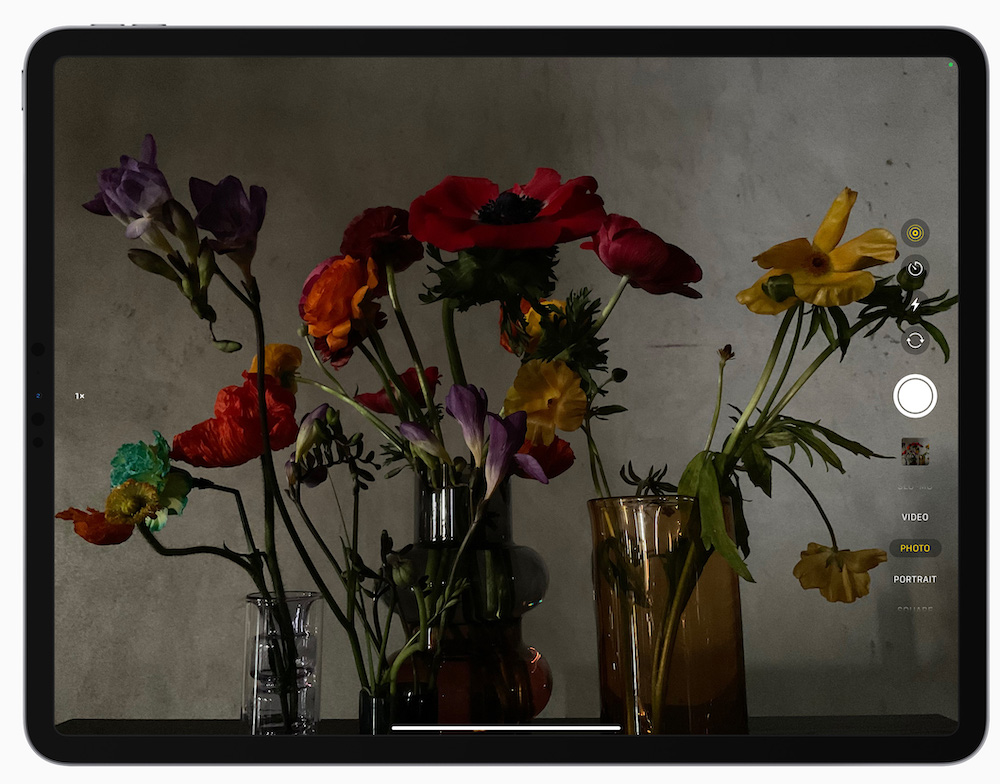

The whole iOS ecosystem is built around the internal camera (primarily on the iPhone), and Apple assumes “of course you’re using our camera”… It was relatively late in the history of iOS that pulling images in from an external camera without a full-sized computer became practical at all (even four years ago, when I last used iOS on an extended trip, I was using the very slow Lighting card reader – the fast USB-C reader is newer than that). The locked-down nature of iOS, and, by extension, iPadOS, means that there are issues like this when you try to do something too far outside the Apple ecosystem. Could Adobe easily allow sending images to the camera roll at a smaller size? Maybe – I’m not a developer and don’t know quite what’s involved. What if Apple allowed more access to the filesystem? Then, Word could simply bring the images in from a folder, which Lightroom already exports to at a variety of sizes, although the interface is a little tricky to figure out – the size adjustment is buried two levels deep in a dialog box.
Another example of the iPad’s locked down filesystem posing a problem is if you want to use multiple photo editors. On the Mac, it’s easy. I use Lightroom Classic to import and organize, DxO Photo Lab for most of my editing, Capture One to handle cameras that DxO won’t (primarily X-Trans), and ImagePrint to print. Since everyone can see the same folders, no problem.
In contrast, stuck in iPadOS, I downloaded ON1 to the iPad, to see if it offered any better editing than the relatively limited Lightroom CC. It can’t access Lightroom’s files because iOS and iPadOS don’t do that, and there isn’t any obvious way to import the files into ON1 even if making another copy (of a bunch of enormous files) is acceptable. I’d really have to get at the raw files on a desktop computer with a more open filesystem, then reimport them into ON1. I intend to bring at least a sample collection of files into ON1 to see if it’s a better editor than Lightroom CC, and what options it offers for transmitting files to the desktop (where Lightroom CC, with a little configuration on both ends, is very good). More on that in a follow-up…
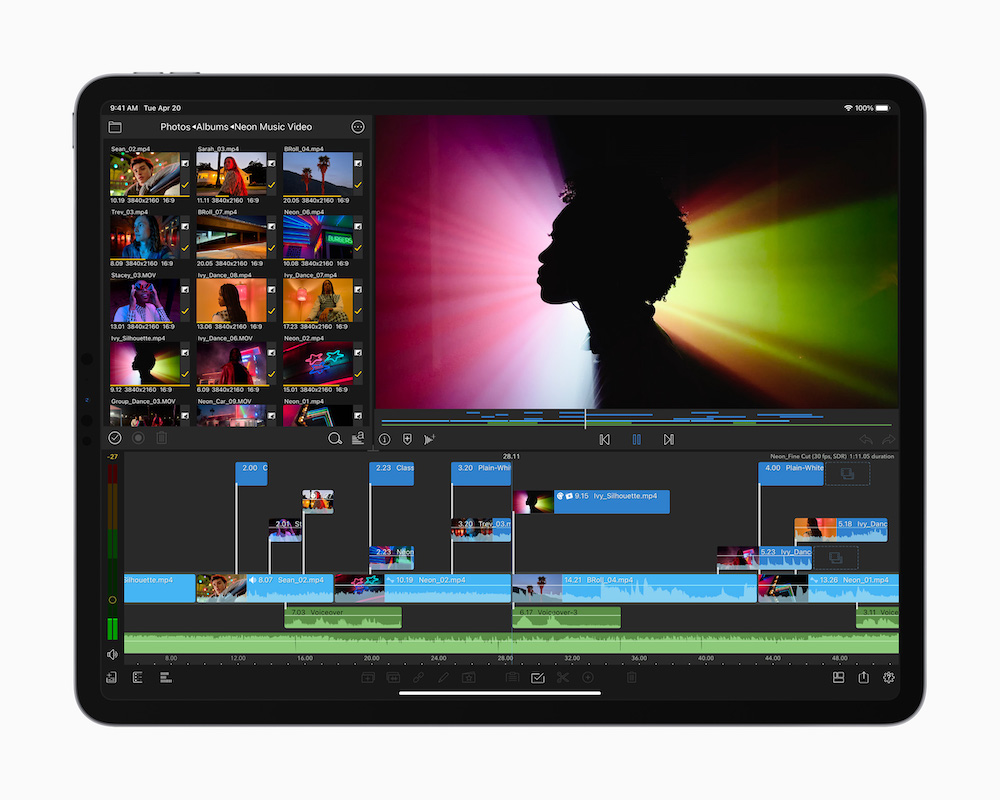

The second, related problem with iPadOS is that the applications we have seen so far are glorified iPhone apps, not desktop versions. For years, iOS and iPadOS were the same thing, and iPads were closer in power to big phones than to Macs, so the low-function apps made some sense. At this point, the M1 iPad is exactly as powerful as any M1 Mac, and it can handle full applications. This could either be solved by Apple writing the small amount of “glue” code to allow the iPad to run Apple Silicon native Mac applications, or by developers writing a similarly small amount of code to allow their Apple Silicon Mac applications to run on iPads.
The experience of using an iPad Pro as a computer is only as good as the individual application. Really using an iPad as a desktop replacement requires locating applications with the fewest possible compromises, and some common applications that have iPad versions have limited functionality. The Microsoft Office suite, for example, exists in iPad versions, but they are nothing like the desktop versions. iPad Office is available for free to anyone who subscribes to the desktop Office 365, but not separately.
If you already subscribe, or if you have access to Office 365 through work or school, the price for the limited iPad versions is certainly right (and they are very handy adjuncts, exactly as Microsoft intended them to be). If your only computer is an iPad, the subscription is almost certainly not worth it for the features you get – Microsoft sees the iPad as an adjunct to your larger computing setup, while a $1699 iPad needs to be able to largely replace another computer. Not only does Word for the iPad lack the sophisticated formatting of the desktop version, it tends to hang up on long or complex documents.
Another example of limited iPad software, when the M1 iPad Pro is surely capable of much more, is Lightroom CC. To be fair, Lightroom CC is inherently limited, even on an ultra-powerful desktop computer – but there’s Lightroom Classic (and Capture One, DxO, On1, Luminar, etc.) for that. On the iPad, you’re stuck with CC only, and it is a wonderful downloading, viewing and sorting tool, but a very limited editor. It doesn’t even have a print function… Again, like Microsoft, Adobe views the iPad as an adjunct to a desktop or a larger laptop, not as a computer in its own right. We are seeing an increasing number of photo editors either coming out with iPad versions or pre-announcing them, plus Adobe always improves Lightroom CC every fall, and this will be one of the most interesting stories of the next year or so.
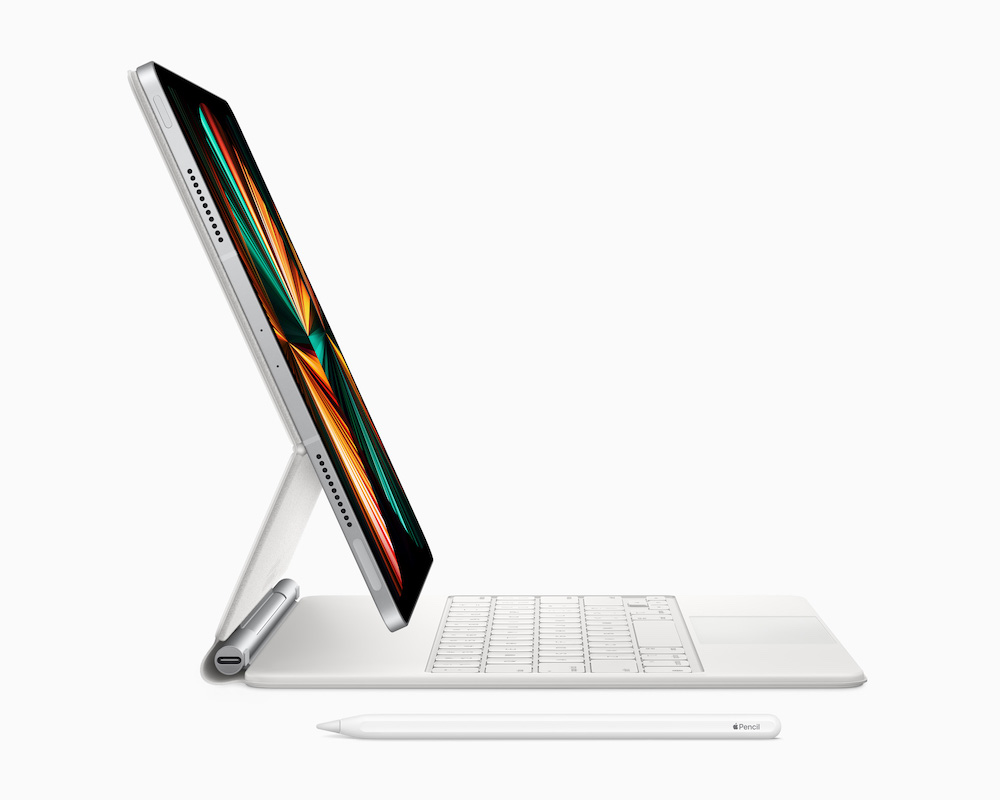

I’m writing this ON the iPad Pro in a text editor called Ulysses, which works much better than mobile Word for longer documents. With its accessory Magic Keyboard, any recent iPad Pro is a comfortable machine to write on. Without the Magic Keyboard, it’s a standard glass-keyboard experience – much better than any phone, because the keyboard is bigger – but not anything you’d want to use for serious writing. Add the Magic Keyboard, and it becomes one of the most comfortable mini-laptops I’ve used. The Magic Keyboard is not quite full size, but it’s an easy adjustment, and it has the touch of a pretty good laptop keyboard. It feels far better than anything with Apple’s late, unlamented butterfly keyboard and darned close to the keyboard on my 16” MacBook Pro, which Apple also brands as a Magic Keyboard. The Magic Keyboard holds the iPad at a very nice angle for writing, although without much adjustment. Unfortunately, it’s slightly heavier than the iPad itself, and brings the combination up into a weight range where laptops running a full OS begin to appear, although none with the performance of the M1 iPad Pro.
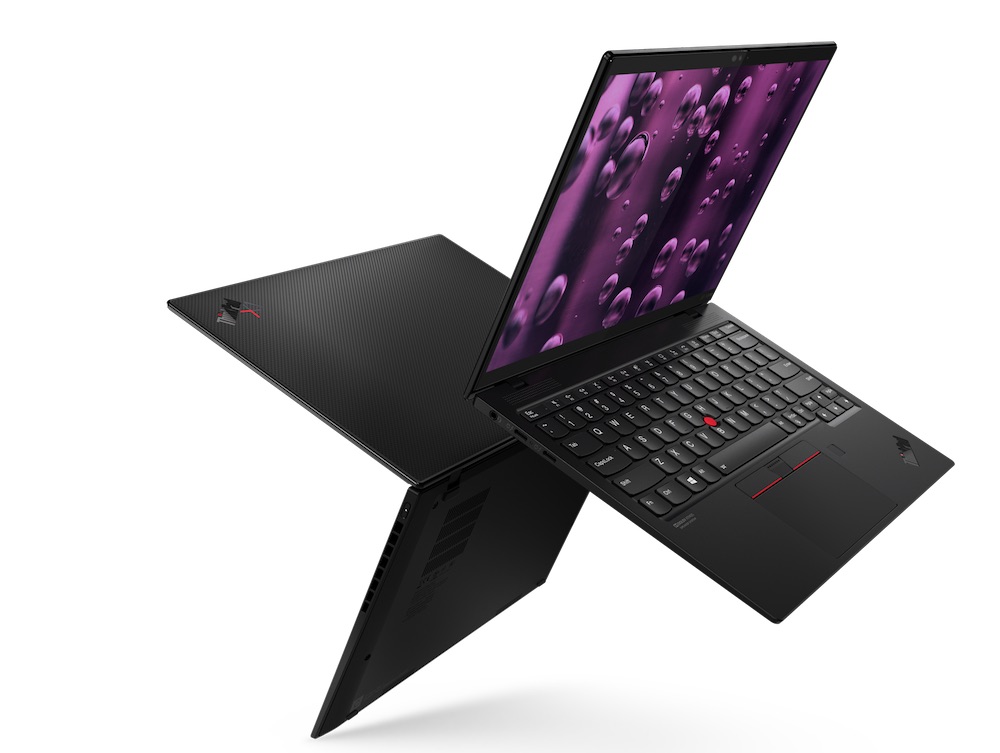

In the 2 lb weight range, the choices get interesting, as the iPad Pro plus Magic Keyboard is competing with the smallest and lightest decent Windows laptops (Apple’s current MacBook Air is considerably heavier at almost 3 lbs). Something like a Lenovo ThinkPad X1 Nano offers a full operating system for the weight of an iPad Pro with the Magic Keyboard, and it’s comparable in price as well. Neither the screen nor the CPU power is as good as the iPad’s, but the range of available photo editors goes from “a few, largely derived from phone apps” on the iPad to “anything you want” on a Windows laptop. There is no competition whatsoever for the M1 iPad Pro at 1 lb where every other device is massively compromised, but 2 lb with the Magic Keyboard opens up quite a bit, with tradeoffs between Apple’s screen and performance and Windows’ full OS and selection of photographic apps. One thing to be aware of is that iPadOS uses RAM much more efficiently than even MacOS, let alone Windows. A Windows laptop would need at least 24 GB of RAM, and quite possibly 32 GB, to have as much memory flexibility as the 16 GB iPad.
Unfortunately given its very high memory efficiency, iPadOS will only allow any individual application to access 5 GB of RAM – a restriction that makes sense EXCEPT on the small number of iPads with 16 GB of RAM, iPads that are largely in the hands of creative pros who want more RAM for one application. Apple needs to lift this limitation to make the high RAM configuration on 1 TB and 2 TB M1 iPads more useful.
To be fair, this limitation may be gone in iPadOS 15 – I’m writing to Apple to see if I can keep this iPad long enough to try it with iPadOS 15, and also with the upcoming iPad versions of Capture One and several other photo editors. If Apple were to lift the limit, would developers take advantage of it, or will they develop to a less ambitious target due to the low prevalence of 16 GB iPads? Most photo editing software should be able to run very well in 16 GB of RAM (depending on library size and image size) – remember that it wasn’t until 2018 that you could buy an Apple laptop with more RAM than that, and iPadOS is more efficient than MacOS. Even video editing should be possible – what would Final Cut Pro on a machine with this superb a touch interface be like?
In conclusion, the 2021 M1 iPad Pro is an amazing piece of hardware. Used within the limitations imposed by its software, it is a nearly ideal field tool for downloading and viewing images. With its fast cellular and WiFi capabilities, it is an excellent transfer tool to get your images to the cloud service of your choice – all of them have iOS apps, and Apple and Adobe have broader apps (Photos and Lightroom CC) that incorporate cloud functions. Later in your process, it is a groundbreaking portfolio tool that allows seamless presentation of your images in a much freer way than most tools based on a desktop or laptop computer. For these stages of the photographic process, it is Highly Recommended. The catch is that the editing stage between viewing and sharing or displaying isn’t quite there yet, almost entirely owing to artificial limits imposed by software. If you are going to try using it without a full-sized computer in the process, it earns only a Recommended (with reservations) as of Summer 2021. It could improve this score with software improvements, and I think at least some of those improvements are likely over the next year. I look forward to continuing to follow its journey.
Dan Wells
August 2021
Read this story and all the best stories on The Luminous Landscape
The author has made this story available to Luminous Landscape members only. Upgrade to get instant access to this story and other benefits available only to members.
Why choose us?
Luminous-Landscape is a membership site. Our website contains over 5300 articles on almost every topic, camera, lens and printer you can imagine. Our membership model is simple, just $2 a month ($24.00 USD a year). This $24 gains you access to a wealth of information including all our past and future video tutorials on such topics as Lightroom, Capture One, Printing, file management and dozens of interviews and travel videos.
- New Articles every few days
- All original content found nowhere else on the web
- No Pop Up Google Sense ads – Our advertisers are photo related
- Download/stream video to any device
- NEW videos monthly
- Top well-known photographer contributors
- Posts from industry leaders
- Speciality Photography Workshops
- Mobile device scalable
- Exclusive video interviews
- Special vendor offers for members
- Hands On Product reviews
- FREE – User Forum. One of the most read user forums on the internet
- Access to our community Buy and Sell pages; for members only.













